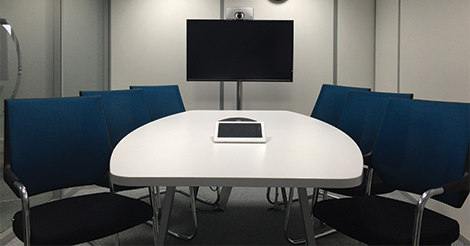Choosing to upgrade and implement new distribution ERP software is a huge decision that affects many areas of a company. Not only does it provide the opportunity to improve technologies and increase automation, but it also provides a chance to evaluate processes and streamline activities across all departments. This is why the software search and evaluation process should be as extensive as the implementation process itself, in order to reap all the benefits of an upgrade.
Although most software vendors have unique sales processes for working with prospective customers, almost all will include a demonstration stage at some point. To best evaluate your options, consider only participating in demos when you have narrowed the search down to 2-3 vendors. Trying to evaluate too many can result in information overload, in which no decision is made at all. To best prepare for the software evaluation process, and specifically how to make demos worthwhile, we have outlined some tips below.
Make 80% of Your Decision Before the Demo
Going into a demo, you should already have a good idea as to whether or not the software can meet all your needs, with the demo acting as final clarification. Most of your time should be spent consulting with vendors on your specific business requirements and current processes, prior to even scheduling a demo. Aside from reviewing specific features, a demo should be the final piece of the puzzle that reiterates and showcases what you already know – although software UI is an important factor to consider, it should not trump a system’s ability to meet your needs, and a vendor that understands your business and can help you achieve your goals. In addition, many vendors provide pre-recorded demo videos which will at least give you an idea of software look and feel. Invest the time to watch these during initial discussions.
Create an Agenda and Stick to It
Make sure that before going into a demo you have outlined and discussed with the vendor an agenda for the discussion and what will be covered. It can be easy to get bogged down with specific features and processes but focus on the bigger picture and which features are most important. Prepare a list of must-haves vs. nice-to-haves and cover the former first. Remember - a demo is designed to provide an overview of functionality addressed in previous discussions and not to train you on the software. Hint: if you identify and quantify the 6 - 10 most significant benefits you're looking to realize from the new software, then those should be the focus of at least 90% of the demo.
Involve the Appropriate Stakeholders
Participation in demos should be organized in such a way that it includes all necessary stakeholders in the process. It also important that any decision makers be involved prior to the demo, and have input into the agenda so that they know what to expect. One of the biggest mistakes is to invite decision makers into the demo when they have had no prior involvement with the vendor, and therefore know nothing about what has been previously discussed and what the software can do.
Invest the Time
Staff should be dedicated to the time it takes to go through a demo and rid themselves of distractions from their daily routine. Sometimes it may be necessary to hold two demos that involve different stakeholders and employees so that those topics which are important to each set can be covered in more detail. The decision should not be a one-person job but should include several of those who have a role in using the system. You might also want to start with a high-level demo first, and then continue to a more detailed one once the decision has been narrowed down to between 1-2 vendors. This eliminates the chance of information overload and ensures time won’t be wasted on vendors that are not a good fit. In general, demos should take no longer than 60-90 minutes including questions - this will help to keep the discussion on track with the agenda, and make it easier for participants to absorb all the information. Viewing any more than 3 demos, especially when they are longer than 90 minutes, can make it impossible to comprehend the information and discern one vendor from the next.
Take Notes
During the demo process, you may think of additional questions you have and features you would like to see, but if you start discussing these at the moment than you would be going against tip number 2. Instead, take notes during the discussion so that if there is time towards the end or after you can ask your questions and spend the time properly addressing any issues.
Know your options, make the right choice and grow your business. This Software Buying Guide can help you do just that.










